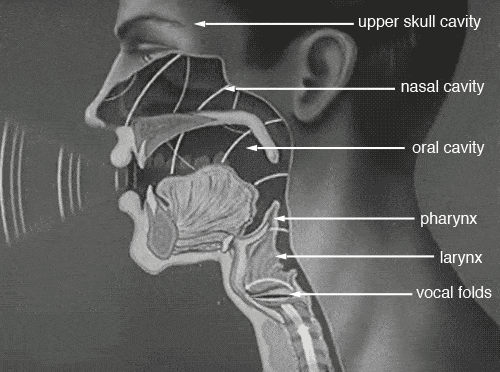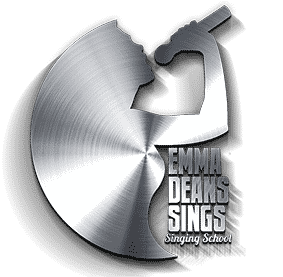Vocal Resonance
Opening up & Why its important for sound quality
Resonance is the intensity/quality of the tone you hear when you sing or speak. It is caused by the reverberation of sound waves from your vibrating vocal cords; depending on how they travel around before exiting your body. ie if focusing on head voice which cavities in your skull the sound waves bounce off.

Resonance is the intensity/quality of the tone you hear when you sing or speak. It is caused by the reverberation of sound waves from your vibrating vocal cords; depending on how they travel around before exiting your body. ie if focusing on head voice which cavities in your skull the sound waves bounce off.
There are 6 main resonating areas in the body: the larynx, pharynx, the mouth (oral cavity), nasal cavity, upper skull cavity & the chest. When singing we use mixes of these depending on the song.
The first place resonation occurs is in the Larynx, when the exhaled breath changes to a sound wave as it passes over the vocal folds. It is the start of a chain reaction as sound travels to the next vocal resonance point, changing or intensifying depending on how you manipulate your muscles (specifically the mouth, throat & diaphragm).
The next vocal resonator is the Pharynx. It is the passageway between the nasal cavity & the larynx. The amount of resonance produced depends on how much air passes through the pharynx & at what velocity. Lifting the soft palette in your mouth is incredibly important in opening up the pharynx, thus increasing the amount of resonation.
Whilst the mouth is often thought to be the most important resonator, too much focus on the mouth only can result in a weaker shallower tone & over used tight jaw muscles. Relaxing the tongue keeping it flat down in your mouth will help to create more space & help with tension. The tongue is also used to shape the vowels. Shaping your lips will help enunciation right before sound leaves you.
Nasal cavity is where you can add some colour to your sound & play around to get some modern or theatrical sounds. Broadway is big on nasal resonance! The only way the nasal cavity can be used for resonance is by lifting the soft palette.When the soft palette is down it is the equivalent to a seal forcing air out through the mouth. Forcing sound toward the nasal cavity with soft palette down will lead your tone falling flat. Resonation in the nose is essential for pronunciation of “ng”, “m” & “n” sounds often used in the English language.
Some times called head voice the upper skull is what will help you reach for those high notes properly. You will know when you are effectively working this cavity as you will feel a buzzing sensation between your eyes. You can widen your eyes & lift your forehead to intensify this zone. The skull is like watermelon with the sound bouncing around inside.
Chest voice or chest resonance is where low vibrations are produced. When used effectively you will feel the rumble in your ribcage. For example when you say words Aunty or Drum in a deep speaking voice you will feel the resonance in your chest.

Recent Comments